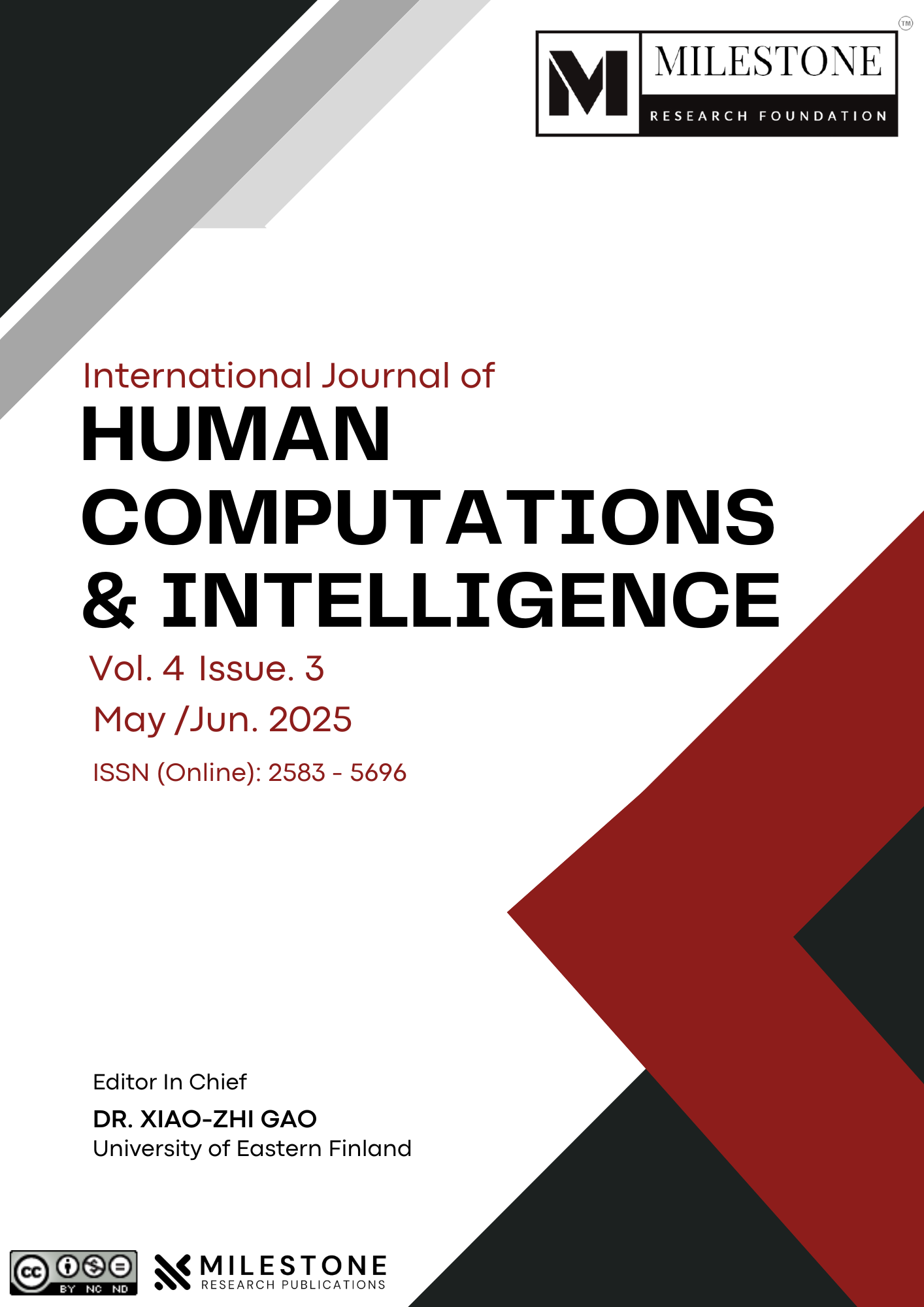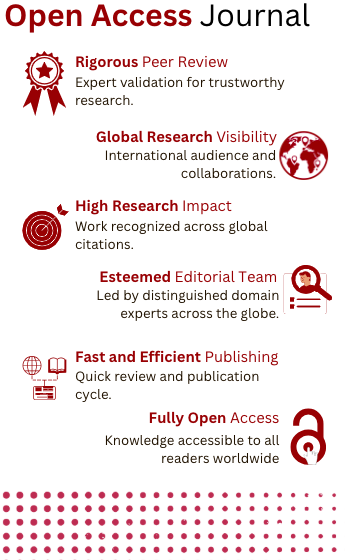ECHOSHIELD: ‘Turning Sound into Safety’ An AI-Powered Sound Detection and Safety Alert System
DOI:
https://doi.org/10.5281/zenodo.15266608Keywords:
ML Models, sound analysis, Mel-Spectrogram, threat detection, alert systemAbstract
Criminal incidents such as assault, robbery, and other violent activities pose serious risks to individuals, particularly those who are alone in isolated areas during late hours. Many of these threats are accompanied by distinctive sounds, which can serve as crucial indicators for early detection. Existing security measures often struggle with inefficiencies, such as delays in identifying threats and inaccuracies in classification. To overcome these limitations, this research introduces a software-based system designed to analyse environmental audio and detect potential dangers. The system operates entirely through smartphones, eliminating the need for extra hardware. It continuously processes ambient sound, identifies distress-related noise patterns, and promptly alerts emergency contacts via email, SMS, or WhatsApp. Audio data sourced from an open dataset is analysed using Exploratory Data Analytics (EDA) techniques and then utilized for training advanced deep learning models, including Long Short-Term Memory (LSTM) networks and Convolutional Neural Networks (CNN), ensuring reliable classification of different sound events.References
Suma, T. P., & Rekha, G. (2021). Study on IoT based women safety devices with screaming detection and video capturing. International Journal of Engineering Applications and Sciences Technology, 6(7), 257–262.
Zinemanas, P., Rocamora, M., Miron, M., Font, F., & Serra, X. (2021, April). An interpretable deep learning model for automatic sound classification. Electronics, 10(7), 850.
Monisha, D. G., Monisha, M., Pavithra, G., & Subhashini, R. (2016, March). Women safety device and application-FEMME. Indian Journal of Science and Technology, 9(10), 1–6.
Ciaburro, G., & Iannace, G. (2020, July). Improving smart cities safety using sound events detection based on deep neural network algorithms. Informatics, 7(3), 23.
Cao, J., Cao, M., Wang, J., Yin, C., Wang, D., & Vidal, P.-P. (2019, October). Urban noise recognition with convolutional neural network. Multimedia Tools and Applications, 78(20), 29021–29041.
Triantafyllopoulos, A., Keren, G., Wagner, J., Steiner, I., & Schuller, B. W. (2019, September). Towards robust speech emotion recognition using deep residual networks for speech enhancement. In Proceedings of INTERSPEECH (Graz, Austria).
Bhardwaj, A., Khanna, P., Kumar, S., & Pragya. (2020, January). Generative model for NLP applications based on component extraction. Procedia Computer Science, 167, 918–931.
Malova, I. S., & Tikhomirova, D. V. (2021, January). Recognition of emotions in verbal messages based on neural networks. Procedia Computer Science, 190, 560–563.
Sit, M. A., Koylu, C., & Demir, I. (2019, November). Identifying disaster-related tweets and their semantic, spatial and temporal context using deep learning, natural language processing and spatial analysis: A case study of hurricane Irma. International Journal of Digital Earth, 12(11), 1205–1229.
Tsiktsiris, D., Vafeiadis, A., Lalas, A., Dasygenis, M., Votis, K., & Tzovaras, D. (2022, January). A novel image and audio-based artificial intelligence service for security applications in autonomous vehicles. Transportation Research Procedia, 62, 294–301.
Kong, Q., Cao, Y., Iqbal, T., Wang, Y., Wang, W., & Plumbley, M. D. (2020). PANNs: Large-scale pretrained audio neural networks for audio pattern recognition. IEEE/ACM Transactions on Audio, Speech, and Language Processing, 28, 2880–2894.
Yang, L., & Zhao, H. (2021, May). Sound classification based on multihead attention and support vector machine. Mathematical Problems in Engineering, 2021, 1–11.
Urban Sound Datasets. (2023, December 1). Retrieved from https://urbansounddataset.weebly.com/download-urbansound8k.html
Sworna, Z. T., Mousavi, Z., & Babar, M. A. (2023, November). NLP methods in host-based intrusion detection systems: A systematic review and future directions. Journal of Network and Computer Applications, 220, Article 103761.
Özseven, T. (2023, August). Investigation of the effectiveness of time-frequency domain images and acoustic features in urban sound classification. Applied Acoustics, 211, Article 109564.
Viveros-Muñoz, R., Huijse, P., Vargas, V., Espejo, D., Poblete, V., Arenas, J. P., Vernier, M., Vergara, D., & Suárez, E. (2023, October). Dataset for polyphonic sound event detection tasks in urban soundscapes: The synthetic polyphonic ambient sound source (SPASS) dataset. Data in Brief, 50, Article 109552.
Downloads
Published
How to Cite
Issue
Section
License
Copyright (c) 2025 S Tharun Kumar, V Soumya Sree, V Praveen, V Veera Chandrika, T Naveendra, P Chandra Sekhar

This work is licensed under a Creative Commons Attribution-NonCommercial-NoDerivatives 4.0 International License.







